Hobby Horse
1. More Free Patterns can be seen along the sidebar (on right side),
or you can use the Free Patterns label to view all posts.
2. Free Pseudo-Patterns or Pattern Outlines can be found using the Free Pseudo-Patterns label.
Kelley commented: Love that little hobby horse! Too bad it's too big. (Just how big is it, anyway? Just curious.) I really like cloths with lacework images like this little horsey, the papillon, and the heart lace cloth.
The cloth is about 10 inches square (~25.4 cm). Definitely on the large side. What do you do with something that size? I am not one to seam up squares to make a baby blanket or afghan (ugh, I hate hate hate seaming!!!), but I suppose this could be turned into a small pillow by adding a back side and some stuffing ... and yes, a little bit of seaming too.
I hadn't planned on posting row-by-row instructions for this, however I have changed my mind. Here it is for those who are interested...
Stitches used in this cloth include:
Garter Stitch, BW1 pg 10
Stockinette Stitch, BW1 pg 10
The Little Hobby Horse, BW3 pg 179
Please email me if you would like your photo and a link to your blog (if you have one) to appear in My Readers' Gallery.
Hobby Horse Cloth
© Designed by S.M. Kahn, Feb 2007
Smariek Knits -=<>=- http://smariek.blogspot.com
Please read "Notes" section at the bottom before starting, particularly the steps for M1, M2, S2TK1P, and SK2TP.
Using WW kitchen cotton and US7 (4.5mm) needles, cast on 48 stitches.
Knit 4 rows border.
1. B3, Purl across, B3
2. B3, K7, Cluster 3, K19, Cluster 3, K10, B3
3. B3, Purl across, B3
4. B3, K5, K3Tog, YO, M2, YO, K3Tog-b, K15, K3Tog, YO, M2, YO, K3Tog-b, K8, B3
5. B3, Purl across, B3
6. B3, K4, (K2Tog, YO)x2, K1, (YO, SSK)x2, K13, (K2Tog, YO)x2, K1, (YO, SSK)x2, K7, B3
7. B3, Purl across, B3
8. B3, K5, YO, K2Tog, YO, SK2TP, YO, SSK, YO, K15, YO, K2Tog, YO, SK2TP, YO, SSK, YO, K8, B3
9: B3, Purl across, B3
10: B3, K4, (SSK, YO)x2, K1, (YO, K2Tog)x2, K13, (SSK, YO)x2, K1, (YO, K2Tog)x2, K7, B3
11: B3, Purl across, B3
12: B3, K6, YO, SSK, YO, SK2TP, YO, K17, YO, K3Tog, YO, K2Tog, YO, K9, B3
13: B3, Purl across, B3
14: B3, K7, (YO, SSK)x2, K17, (K2Tog, YO)x2, K10, B3
15: B3, Purl across, B3
16: B3, K8, (YO, SSK)x2, K15, (K2Tog, YO)x2, K11, B3
17: B3, Purl across, B3
18: B3, K9, (YO, SSK)x2, K13, (K2Tog, YO)x2, K12, B3
19: B3, Purl across, B3
20: B3, K10, (YO, SSK)x2, K11, (K2Tog, YO)x2, K13, B3
21: B3, Purl across, B3
22: B3, K11, (YO, SSK)x2, K9, (K2Tog, YO)x2, K14, B3
23: B3, Purl across, B3
24: B3, K12, YO, SSK, YO, S2TK1P, YO, K1, YO, S2TK1P, YO, K1, YO, S2TK1P, YO, K2Tog, YO, K15, B3
25: B3, Purl across, B3
26: B3, K12, (YO, S2TK1P, YO, K1)x4, K14, B3
27: B3, Purl across, B3
28: B3, K11, SSK, YO, K1, (YO, S2TK1P, YO, K1)x3, YO, K2Tog, K14, B3
29: B3, Purl across, B3
30: B3, K12, (YO, S2TK1P, YO, K1)x4, K14, B3
31: B3, Purl across, B3
32: B3, K11, SSK, YO, K1, (YO, S2TK1P, YO, K1)x3, YO, K2Tog, K14, B3
33: B3, Purl across, B3
34: B3, K12, (YO, S2TK1P, YO, K1)x4, K14, B3
35: B3, Purl across, B3
36: B3, K10, (K2Tog, YO)x2, K7, (YO, SSK)x3, K15, B3
37: B3, Purl across, B3
38: B3, K9, (K2Tog, YO)x2, K9, (YO, SSK)x3, K4, (K2Tog, YO)x2, K6, B3
39: B3, Purl across, B3
40: B3, K8, (K2Tog, YO)x2, K1-b, YO, SSK, K8, (YO, SSK)x3, K1, K3Tog, YO, M1, K1, K2Tog, YO, K5, B3
41: B3, Purl across, B3
42: B3, K9, YO, K2Tog, YO, SK2TP, YO, K10, (YO, SSK)x2, YO, K3Tog, YO, K2Tog, YO, K1, K2Tog, YO, K6, B3
43: B3, Purl across, B3
44: B3, K10, YO, SK2TP, YO, K12, YO, SSK, YO, K3Tog, YO, K2Tog, YO, K1, K2Tog, YO, K7, B3
45: B3, Purl across, B3
46: B3, K10, K1-b, K1, K1-b, K13, (YO, SK2TP)x2, (YO)x2, K2Tog, YO, K8, B3
47: B3, P10, K1, P31, B3 *** note: you are doing K1, P1 into the double YO from row 46 ***
48: B3, K27, YO, SK2TP, YO, K1, K2Tog, YO, K9, B3
49: B3, Purl across, B3
50: B3, K28, YO, SSK, K2Tog, YO, K10, B3
51: B3, Purl across, B3
52: B3, K28, M1, YO, SK2TP, K10, B3
53: B3, Purl across, B3
54: B3, K31, YO, SSK, K9, B3
55: B3, Purl across, B3
56: B3, K31, K1-b, K10, B3
Knit 4 rows border.
Bind off. Weave in ends.
Notes:
B3 = 3 stitch border of your choice (I used K3 for my border in the cloth above)
Cluster 3 = Slip 3 stitches to right needle with yarn in back. Pass yarn to the front. Slip the same 3 stitches from right needle to left needle. Pass yarn to the back. Knit 3.
K1-b (Knit 1 through Back loop) = Insert needle into the back loop of the stitch and knit it.
Also known as "k tbl", video for how to do this is here:
http://www.knittinghelp.com/knitting/abbreviations_explained/
K2TOG = Knit 2 stitches together.
http://www.knittinghelp.com/knitting/basic_techniques/decrease.php
K3Tog = Knit 3 stitches together
K3Tog-b = Knit 3 stitches together through the back loop. (This is similar to k tbl, except it is worked over 3 stitches instead of 1 stitch. You can look at the video for k tbl for an example of how it is done)
http://www.knittinghelp.com/knitting/abbreviations_explained/
M1 (Increase 1 stitch: taking 1 stitch to create 1 more stitch, resulting in 2 stitches total) is done as follows:
1. Knit into the back of the stitch in the row below the 1st stitch on the left needle.
2. knit into the front of the 1st stitch on the left needle.
M2 (Double increase: taking 1 stitch to create 2 more stitches, resulting in 3 stitches total) is done as follows:
1. K1-b (leaving stitch on the left needle)
2. K1 into front of the same stitch
3. Now insert your left needle point behind the vertical strand that runs downwards from between the 2 stitches just made, and K1-b into this strand to make the 3rd stitch of the group.
SSK = slip 1 stitch, slip 1 stitch, knit these two slipped stitches together
http://www.knittinghelp.com/knitting/basic_techniques/decrease.php
S2TK1P (Slip 2 Together, Knit 1, Pass over) is done as follows:
1. Slip 2 stitches together as if to K2Tog. (Viz, both stitches together, not one at a time)
2. Knit 1 stitch.
3. Pass the 2 slipped stitches (from step #1) over the knitted stitch (from step #2).
SK2TP (Slip 1, Knit 2 Together, Pass over) is done as follows:
1. Slip 1 stitch.
2. Knit 2 stitches together.
3. Pass the slipped stitch over.
(I think this is more commonly known as SK2P. I need that extra "T" as a visual reminder to myself that I'm knitting 2 stitches together. It's one of my beginner knitter quirks. You can see a video for how to do SK2P on this site here.)
http://www.knittinghelp.com/knitting/abbreviations_explained/
YO = yarn over
http://www.knittinghelp.com/knitting/basic_techniques/increase.php
Instructions in parentheses followed by x2 and x3 mean you do what is in the parentheses the number of times indicated after "x". For example:
(K2Tog, YO)x2 means you do: K2Tog, YO, K2Tog, YO.
(YO, SSK)x3 means you do: YO, SSK, YO, SSK, YO, SSK.
Tips:
When doing Cluster 3, give the yarn a good tug before knitting the 3 stitches.
.





























































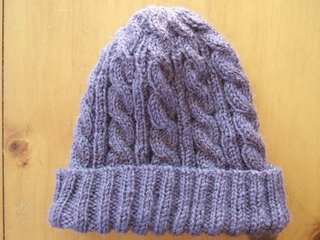




















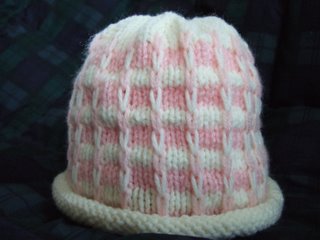









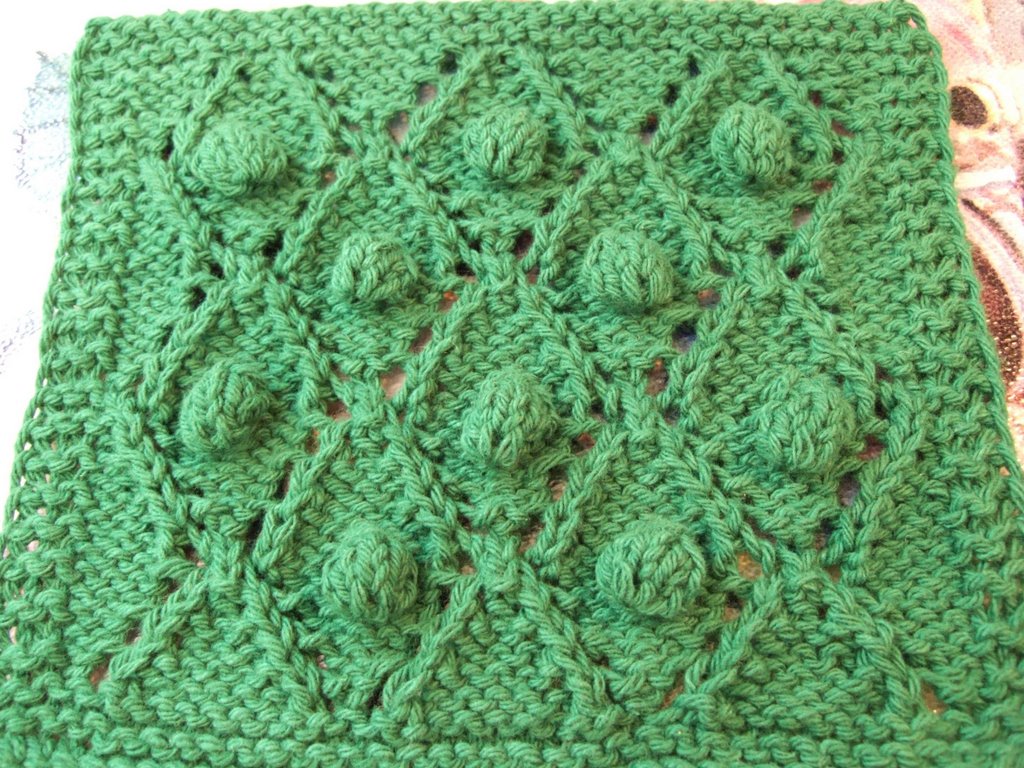




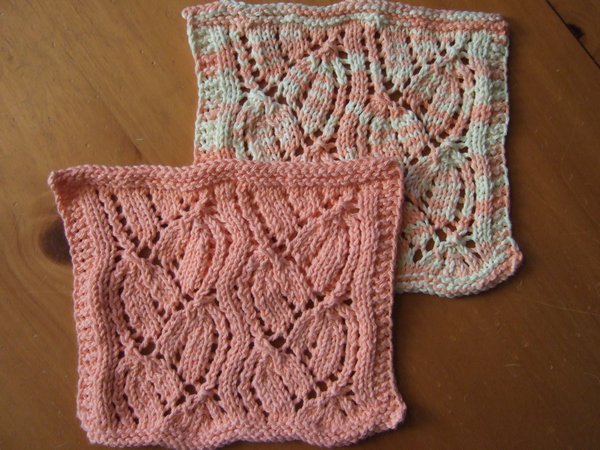












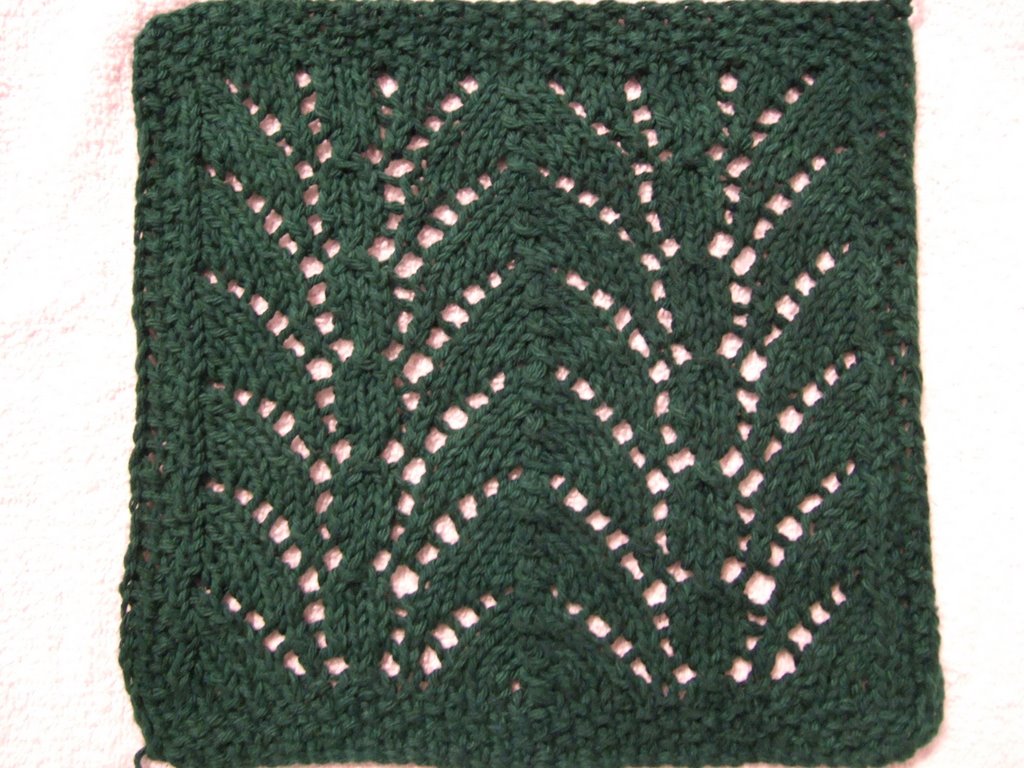





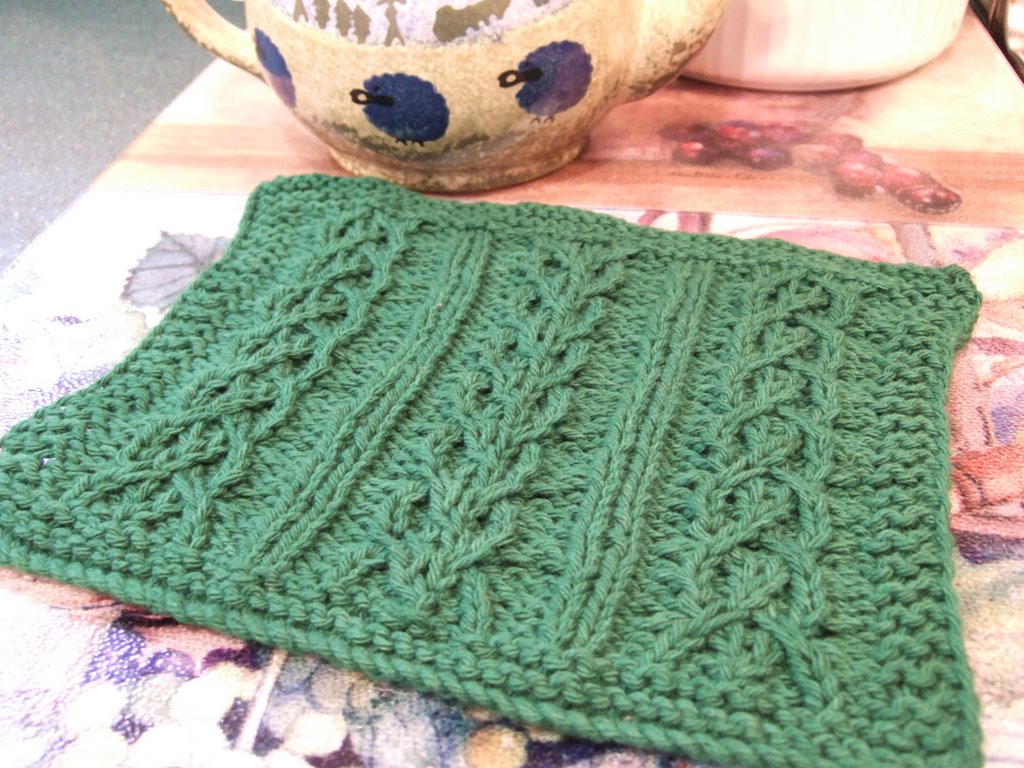



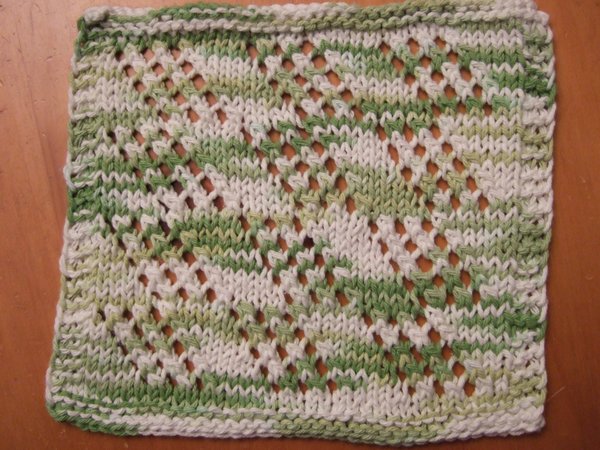







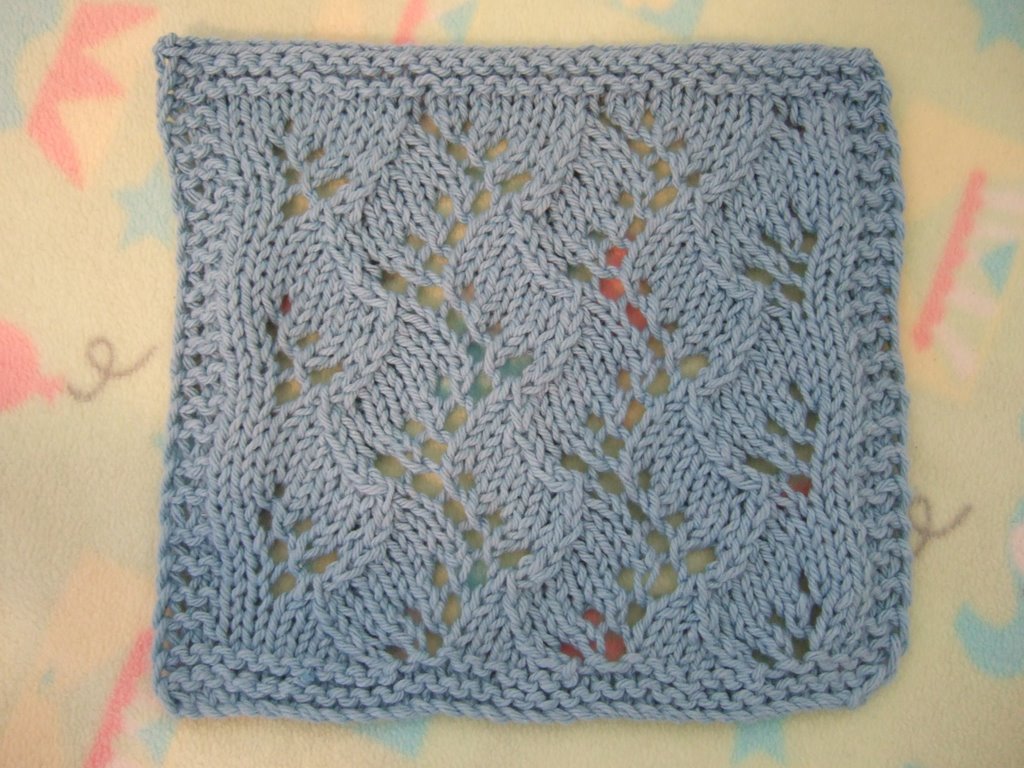


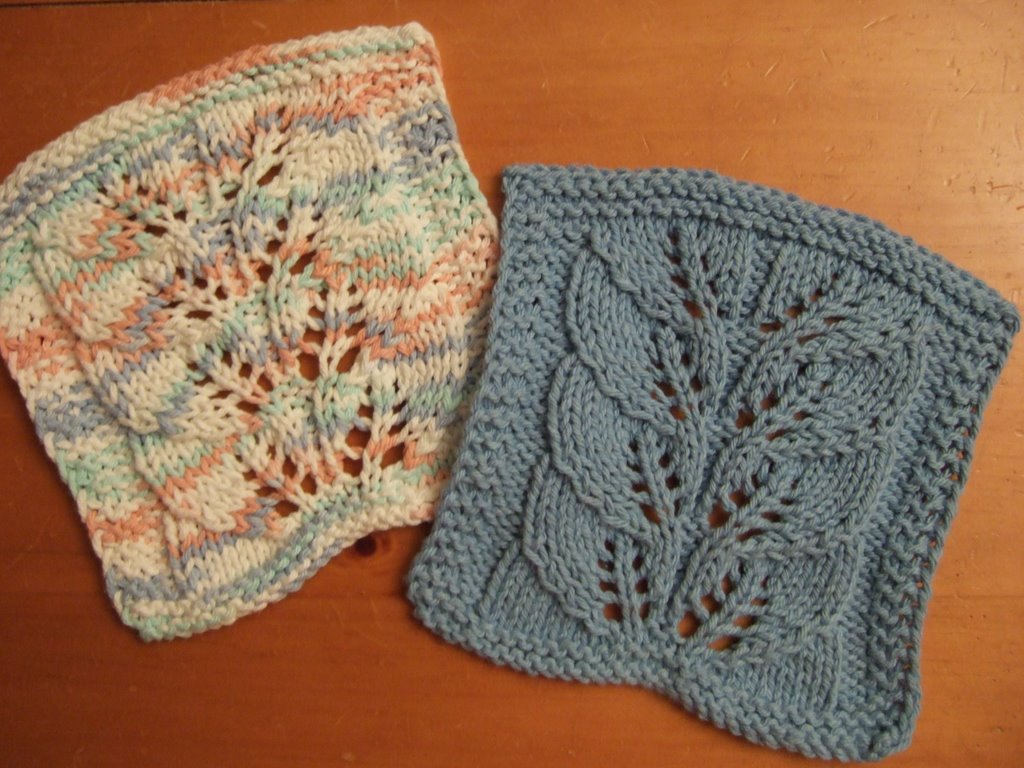

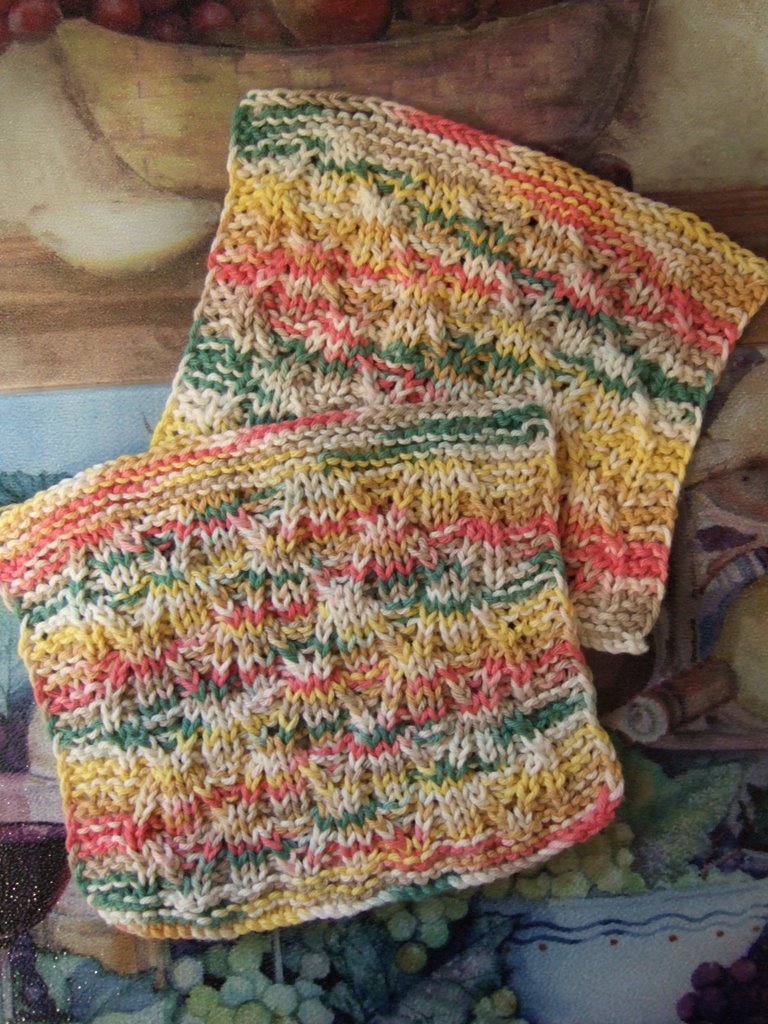

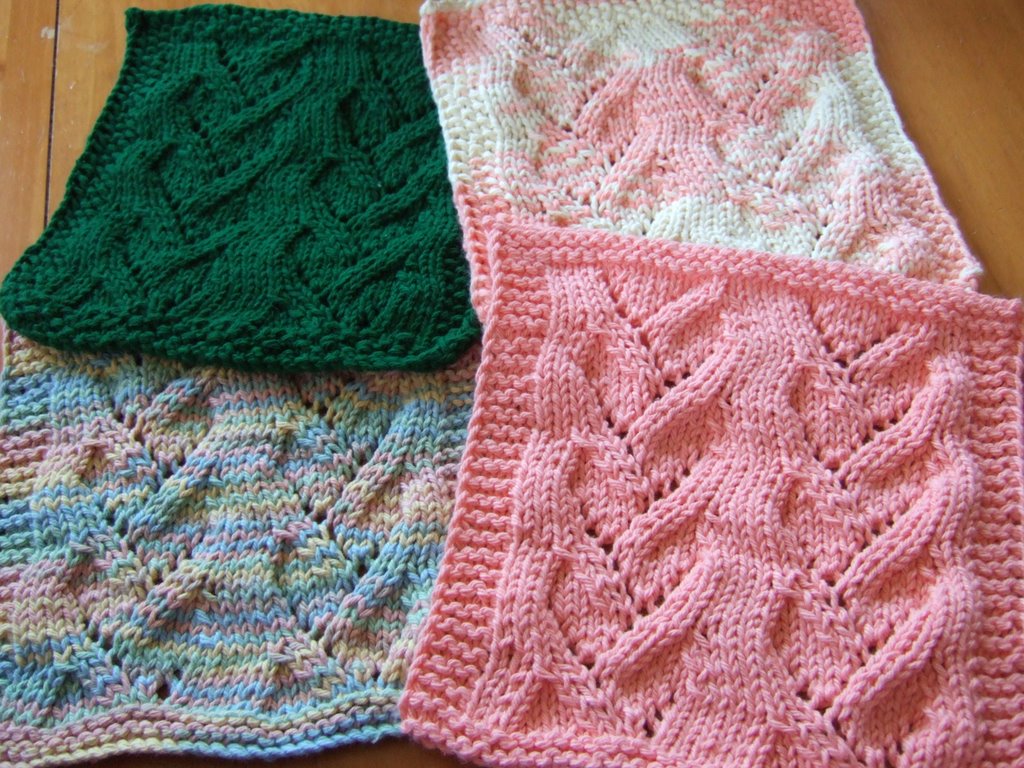























9 stitch(es):
From BW? VERY nice!
This would make a great baby washcloth!
What do you do with something that size? You make a bunch, and a bunch of plain-is (stockinette or seed) squares, and you put them together for a really cute baby blanket. (or maybe you work in a teddy bear motif for some of the squares) Could be really cute.
You know...you could knit it with sport weight cotton and it would be the right size for a cloth! I don't think that 10 inches is all that large but with a thinner yarn it would be the size I like. I think I'll try it!
Glad I took french. :D
You know I always like the things you create here. That horsey is "rockin'!!". Did I go there...yep sure did.
Hey have a great day!!
ah, i see now. i kept hitting Enregistrer un commentaire, wondering why nothing was happening. the window was hidden beneath another page...duh. anyway, i left a comment for you on flickr, too. awesome designs. so glad i found you! :)
I'm a little confused. You claim this is your own design, copyright 2007, but it appears to be identical to one published in a Woman's Day craft magazine in 1982. Could you please clarify the origin of this pattern?
S - this comment about a pattern from a 1982 magazine is funny - it does say 1982 right? EIGHTY TWO? Where does one find a copy of a magazine from 1982? Microfiche at the library? Better yet, you bought and saved the magazine from when you were how old? just for the very purpose of publishing it and taking credit 27 year later.
Don't your general notes reference resources?
Keep up the great work - love your stuff!
Please re-read carefully the blog post.
The stitch patterns used in this washcloth are enumerated above in the blog post, where it says, "Stitches used in this cloth include: ..."
The words "Stitches used" is a link to my Pattern Bibliography page.
Hover your mouse pointer over those words (viz. "Stitches used") and clicking on your mouse button should take you to that page. I've also made the words "Pattern Bibliography page" a link for your convenience so you may click on that as well.
If that doesn't work, you will also find the Pattern Bibliography page linked in the side bar (on the right side) of my blog. (Twice in fact, as it is also accessible from the "Pattern Biblography" label)
Post a Comment